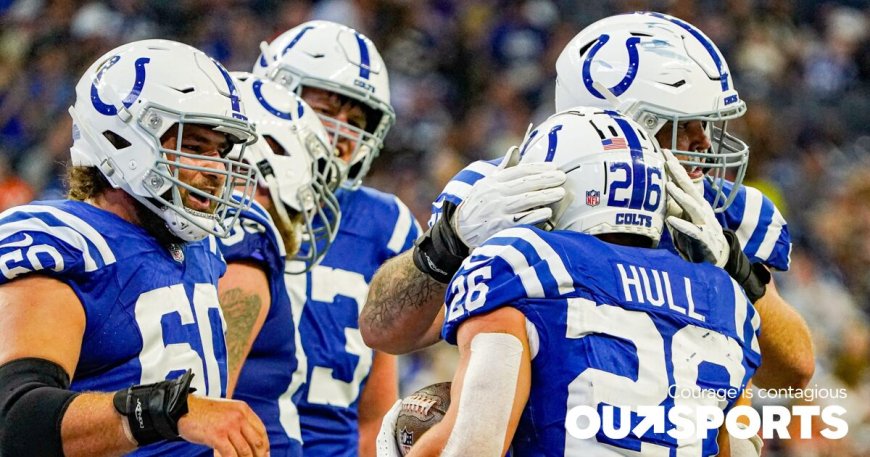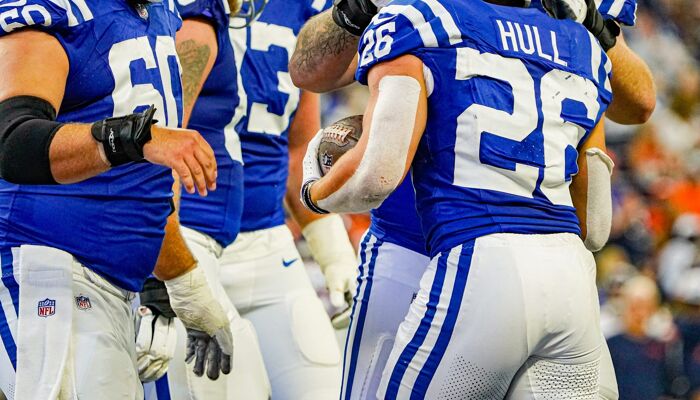Football as a homoerotic ritual — are players really gay?
An academic paper years ago asked the question on many football fans' minds about the homoerotic nature of America's favorite sport. The post Football as a homoerotic ritual — are players really gay? appeared first on Outsports.


Note: This story first appeared on Outsports in 2012 and has been slightly modified.
With football season starting, it’s time to revive a classic that has long been forgotten: An academic paper from 1978 by Cal-Berkeley anthropologist Alan Dundes called “Into the End Zone for a Touchdown: A Psychoanalytic Consideration of American Football.”
I can sum it up with this opening line from a 1978 Time magazine article, “Football as Erotic Ritual”: “Are the guys on the gridiron really gay?”
Dundes, who died in 2005, was a legend in the field of folklore and explored the hidden meaning in all kinds of jokes.
I heard him speak while I was an undergrad at Penn State about his football-as-a-homoerotic-rite theory, having read the paper in my sociology class. In the audience that day were many members of the Penn State football team, many of whom had blood in their eyes as Dundes went on equating football slang with gay sex.
The article in Time resulted in Dundes getting death threats.
Dundes’ paper is a rollicking look at how closely football and its language and goals mirrors sex. Dundes quotes Dave Kopay (the first openly gay NFL player), who wrote this in his book, “The David Kopay Story.”
The whole language of football is involved in sexual allusions. We were told to go out and “f— those guys”; to take that ball and stick it up their asses”or “down their throats.”The coaches would yell,”knock their dicks off,” or more often than that,”knock their jocks off.” They’d say,”Go out there and give it all you’ve got,a hundred and ten percent, shoot your wad. You controlled their line and “knocked” ’em into submission. Over the years I’ve seen many a coach get emotionally aroused while he was diagramming a particular play into an imaginary hole on the blackboard. His face red, his voice rising, he would show the ball carrier how he wanted him to” stick it in the hole.”
Get off the sidelines and into the game
Our weekly playbook is packed with everything from locker room chatter to pressing LGBTQ sports issues.
Subscribe to our Newsletter today
Some of my favorites from Dundes’ paper:
- The object of the game, simply stated, is to get into the opponent’s end zone while preventing the opponent from getting into one’s own end zone. … We can now better understand the appropriateness of the “bottom patting” so often observed among football players. A good offensive or defensive play deserves a pat on the rear end. The recipient has held up his end and has thereby helped protect the collective “end” of the entire team. One pats one’s teammates’ ends, but one seeks to violate the end zone of one’s opponents! …
- Certainly the terminology used in football is suggestive. One gains yardage,but it is not territory which is kept in the sense of being permanently acquired by the invading team.The territory invaded remains nominally under the proprietorship of the opponent. A sports announcer or fan might say, for example, “This is the deepest penetration into (opponent’s team name) territory so far.”
- The trust one has for one’s own teammates is perhaps signaled by the common postural stance of football players. The so-called three-point stance involves bending over in a distinct stooped position with one’s rear end exposed. It is an unusual position and it does make one especially vulnerable to attack from behind, that is,vulnerable to a homosexual attack. … Since one can trust one’s teammates, one knows that one will be patted, not raped.
- “The end zone is a kind of erogenous zone.”
- “Both tight end and split end could easily be understood as possessing an erotic nuance.”
- The object of the game is to “score,”a term which in standard slang means to engage in sexual intercourse with a member of the opposite sex. One “scores” by going” all the way.” The offensive team may try to mount a drive to penetrate the other team’s territory.
- The sexual connotations of football folk speech apply equally to players on defense. One goal of the defensive line is to penetrate the offensive line to get to the quarterback. Getting to the quarterback and bringing him down to the ground is termed “sacking” the quarterback. The verb “sack” connotes plunder, ravage, and perhaps even rape.
- Thus in the beginning of the football game, we have two sets or teams of males. By the end of the game, one of the teams is “on top,” namely the one which has “scored” most by getting into the other team’s “end zone.” The losing team, if the scoring differential is great, maybe said to have been “creamed.”
- I think it is highly likely that the ritual aspect of football, providing as it does a socially sanctioned framework for male body contact … is a form of homosexual behavior. The unequivocal sexual symbolism of the game, as plainly evidenced in folk speech coupled with the fact that all of the participants are male, make it difficult to draw any other conclusion. Sexual acts carried out in thinly disguised symbolic form by,and directed towards, males and males only,would seem to constitute ritual homosexuality.
After reading Dundes, you might never watch football the same way. Enjoy the season!
The post Football as a homoerotic ritual — are players really gay? appeared first on Outsports.

 Mark
Mark 





